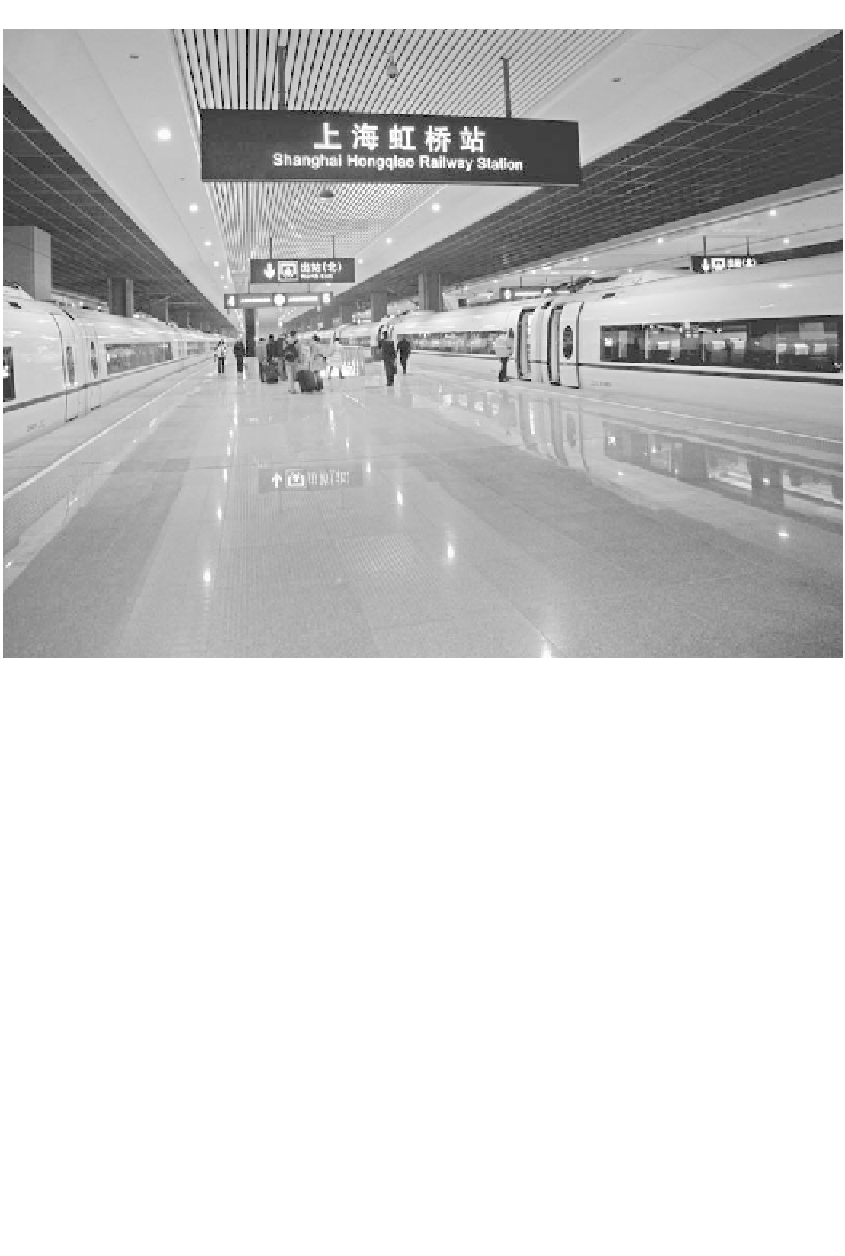Environmental Engineering Reference
In-Depth Information
Figure 6.24
High-speed rail in China. China has the world's longest HSR network, with state-of-the-art and
often luxurious train systems and interchanges.
Motorised two-wheelers and paratransit
The growth in use of motorised two-wheelers in China has been on a very large scale and
rapid, from only 200,000 in 1981 to over 50 million in 2002 (Pucher et al., 2007). Two-
wheelers now account for the vast majority of motorised vehicles in China. They provide an
increasing middle class with affordable, flexible and quick transport, even though there are
still serious problems in terms of congestion, traffic safety and casualty rates. Policy-makers
are concerned about the speed of electric bikes, fearing that they are either too fast to operate
safely in the bike lanes or too slow and dangerous to operate in the motor cycle lanes. A
number of Chinese cities have banned the use of motorcycles, hence electric bikes and scooters
have become even more popular. Motorcycles are typically allowed if they are light and have
small engine capacities. Electric bicycles are gaining market share due to the faster speed than
conventional bicycles, and they are much less expensive than cars (Cherry et al., 2009).
Urban trip distances have risen due to rapidly expanding cities, encouraging faster, longer
range bicycles. The Chinese population bought 21 million e-bikes, compared with 9.4 million
cars, in 2009. China has about 65 million electric bicycles and scooters. Even some who can
afford cars are replacing them with electric two-wheelers to avoid traffic congestion and
expensive gasoline. E-bikes are likely to continue to replace motorcycles, and this may lead
to further electrification of China's transport sector (Weinert et al., 2008). Paratransit modes,

